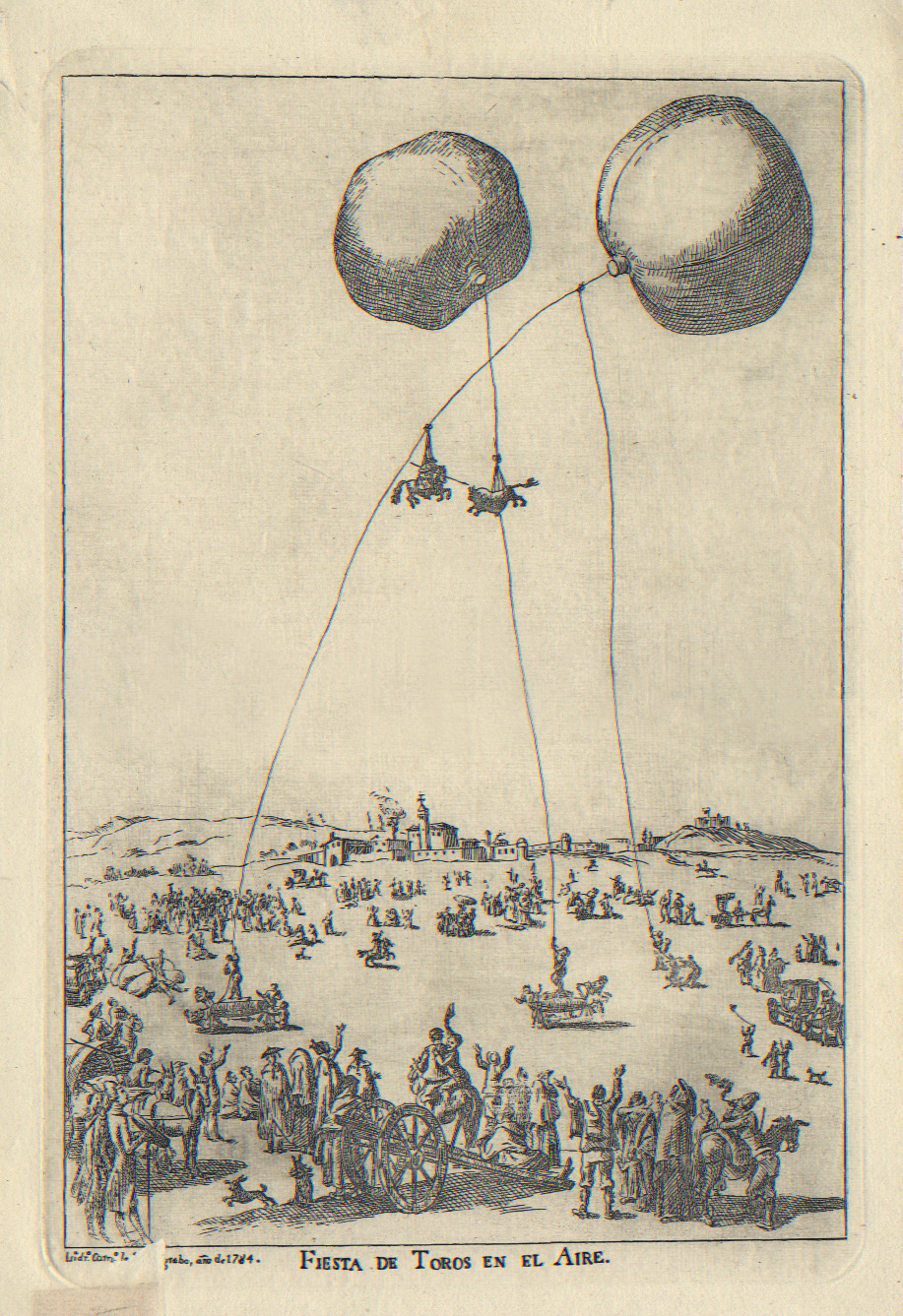
|
|
La Fiesta de
Toros en el Aire
Páez Rios Repertorio 429-2
etching, 1784, a good impression of this rare print,
the only known state (?)*, printed with some overall plate tone
(notably
in the foreground), with margins, on medium-fine ivory laid paper,
with the "JN Guarro Y
M" watermark, two short tears in the
margins (upper left, which has been gummed, and bottom left, the latter
consolidated with old tape on the reverse), a small
triangular misprinting in the lower left (due to a scrap of paper
partially overlaying the lettering: Isidr°.
Carn°. l[o inh° y] grabó, año
de 1784), slight traces
of old mounting tape on the reverse, otherwise in quite excellent
condition
P. 310 x 212 mm; S.
346x237 mm.

|
La Fiesta de Toros en el Aire
is
one
of the most astonishing and farcical prints of the Spanish 18th
century. Its utterly fantastic subject of a bullfight dangling
from two rather flacid balloons reminds one rather more of absurd
surrealistic imagery than classical Spanish printmaking.
Isidro Carnicero was a rather
well-known Valencian artist of the period, who was professsor (and
eventually Director General) of the Real
Academia de Bellas Artes de San Fernando in Madrid.
Aerostatic demonstrations
spread quickly across Europe after the French Montgolfier brothers
first flew their hot-air balloons in 1782-83. José Fernández
Arenas(in Arte efímero y espacio
estético,
1988, p. 396-7,) cites various performances held in Barcelona,
Valencia, and Aranjuez in 1784, which may have inspired Isidro
Carnicero's etching. There is furthermore a famous painting in
the Prado by Antonio Carnicero, his brother, showing a Montgolfier
balloon flown in the
gardens of Aranjuez, June 1784, attended by the royal family and their
court.
The printings (or editions) of
this remarkable etching are not known. We have however located
several impressions of this print in the Biblioteca Nacional de España
(Madrid), the Museo Lazaro Galdiano (Madrid), the Real Maestranza de
Caballería de Sevilla, and the Smithsonian Institution's National Air
and Space Museum (Washington).
* This etching to our knowledge
has never really been catalogued (aside from the Repertorio
de Grabados Españoles by Páez Rios) or studied in depth.


